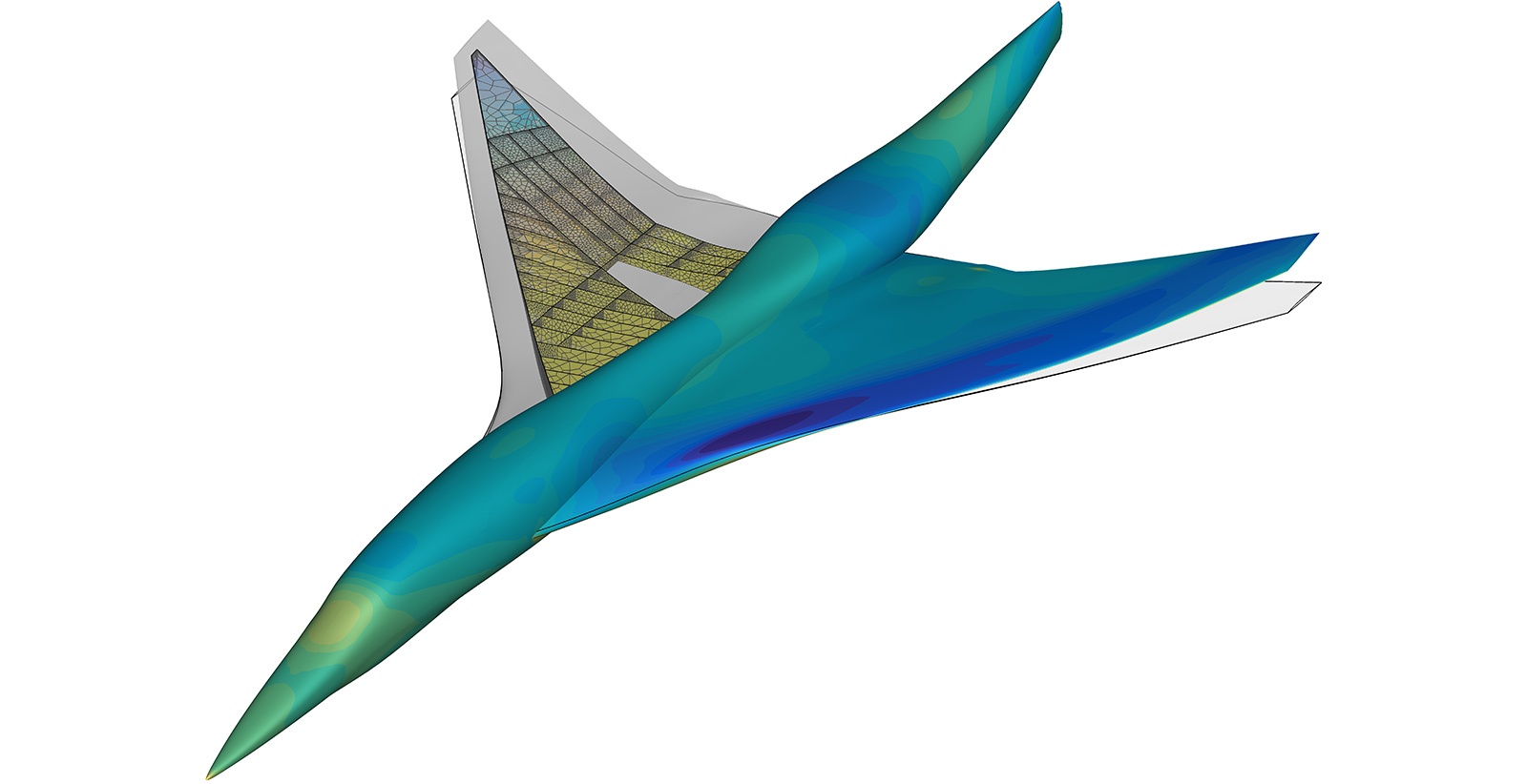Stay Up to Date
Submit your email address to receive the latest industry and Aerospace America news.
The Multidisciplinary Design Optimization Technical Committee provides a forum for those active in development, application and teaching of a formal design methodology based on the integration of disciplinary analyses and sensitivity analyses, optimization and artificial intelligence.
This year had important software releases from the multidisciplinary design optimization community. In March, NASA released Version 3 of OpenMDAO, an open-source, high-performance computing platform for systems analysis and multidisciplinary optimization, with additional updates published monthly. Version 3 introduces changes to the software interface that improve the accessibility and usability of OpenMDAO. The OpenMDAO libraries Dymos and pyCycle were released under open-source licenses. Dymos is a pseudospectral optimal control library, and pyCycle provides a set of thermodynamic propulsion models for engine-cycle analysis.
Also in March, the Systems Optimization Laboratory at McGill University in Quebec released on GitHub a novel relative adequacy framework for multimodel management in multidisciplinary design analysis and optimization for both time-invariant and time-dependent problems.
In May, the University of Central Florida published a new release of PiNN, an open-source code for physics-informed neural network modeling. The work extends recurrent neural networks to cumulative damage modeling of wind turbine bearing fatigue and corrosion-fatigue of fuselage panels implementing physics-informed and data-driven layers within one deep neural network.
In June, researchers at the University of Texas at Austin’s Oden Institute for Computational Engineering and Sciences released the scientific machine learning Operator Inference package, which learns reduced-order models directly from high-fidelity simulation data. By embedding the structure of the governing equations, the Operator Inference reduced-order models have predictive capability not possible with black-box machine learning. This is important for using reduced-order models to accelerate complex physics computations for multidisciplinary design.
The past year also saw important advances in multidisciplinary design optimization methodology and validation. In January, the University of Washington performed integrated engine-pylon structural design optimization at a level of load distribution and stress analysis modeling details that meet current certification requirements. The researchers achieved major weight, cost and schedule gains, and the work lays the foundations for the integrated single-process structural optimization of certification-ready complete airframes.
In February, the Massachusetts Institute of Technology developed an optimization method for the deflection of incoming asteroids with destructive potential for Earth using multistage mission campaigns. The method combines orbital dynamics, spacecraft design and planetary science in a common framework that incorporates epistemic uncertainty.
Also in February, the Multidisciplinary Analysis and Design Center at Virginia Tech developed a bilevel optimization framework for the uncrewed research aircraft mAEWing2 to investigate the effect of incorporating active aeroelastic tailoring under the NASA-funded Performance Adaptive Aeroelastic Wing project. The researchers demonstrated that this approach reduces aircraft weight by relaxing the flutter constraint while ensuring the flutter mode is controllable, enabling the use of an active flutter controller. In June, the team also developed the Distributed Design Optimization of Large Aspect Ratio Wing Aircraft with Rapid Transonic Flutter Analysis in Linux Operating System, which performs multidisciplinary design optimization of medium- and long-range transonic truss-braced-wing aircraft with nonlinear, transonic flutter analysis in a distributed-computing environment.
Also this year, the U.S. Air Force Research Laboratory Multidisciplinary Science and Technology Center contracted program EXPEDITE, short for Expanded MDO for Effectiveness Based Design Technologies, executed by Lockheed Martin, began extending multidisciplinary design optimization beyond engineering quantities (i.e., range, drag) to consider mission effectiveness metrics as response functions. The Quantifying Utility of Aerospace Derivatives program, executed by Northrop Grumman and Stanford University and contracted by AFRL MSTC, is aimed at evaluating the utility of high-fidelity, coupled sensitivities on relevant applications (including aeroelasticity and propulsion integration) at industry scale.
Penn State’s Applied Research Laboratory completed a DARPA-funded project that demonstrated the use of artificial intelligence to design and optimize boats and unmanned air vehicles with video game simulation engines and no human input; the team 3D-printed vehicles and tested them to validate its approach.
Related Posts
Stay Up to Date
Submit your email address to receive the latest industry and Aerospace America news.




